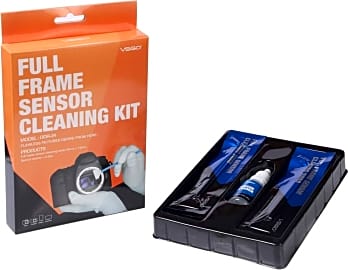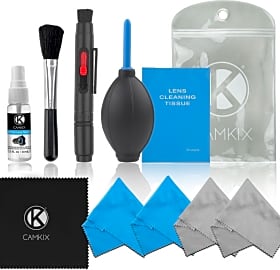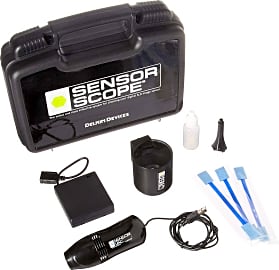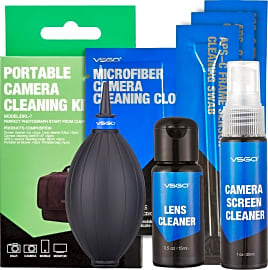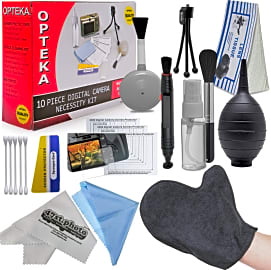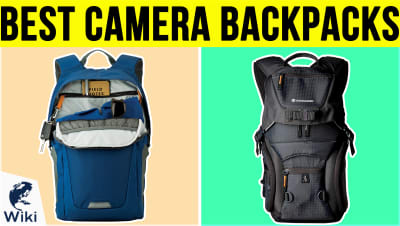The 8 Best Camera Cleaning Kits

This wiki has been updated 35 times since it was first published in May of 2016. Shooting with clean gear is essential for capturing the highest-quality images possible. That means investing in a camera cleaning kit that has the necessary tools you need to keep your equipment spotless. Our selections include sets that are suitable for everyone from amateurs to professionals, and they come with everything from lens wipes and microfiber cloths to sensor scopes and gentle swabs. When users buy our independently chosen editorial picks, we may earn commissions to help fund the Wiki.
Editor's Notes
August 03, 2020:
For this update we removed the Amazon Basics choice because it is no longer available, and added the VSGO Full Frame. It only includes sensor cleaning essentials because many photographers may already have lens cleaning tools, but haven't tried doing the sensor themselves.
The Delkin Sensor Scope also contains specialized tools for sensors, but the high price point makes it less practical for the average user.
The Vexko Travel was added because it's a little more compact than some of the top choices, making it ideal for a photographers who are on location often.
While there are a lot of budget-priced kits on the market that will appeal to the amateur enthusiast who just wants to keep the lens and body clean, we chose to feature the Opteka Digital Necessity Kit because it provides some useful extras, like the small tripod for holding up the camera while it's cleaned, and the mircofiber glove is a good idea for preventing new smudges on the camera body while it's wiped off.
February 28, 2019:
A relatively new item on the market, the Movo kit toward the top of out list is an entry that immediately caught our attention, and pretty easily unseated the rest of the field. With the shuttering of some Ritz camera stores, the availability of the RitzGear set has become somewhat limited, which cost it an appearance in this selection. Finally, while the Delkin Sensor Scope is one of the most useful devices for people interested in cleaning their own sensors, most folks would rather let someone with a little experience do that kind of job, making it a desirable, but less suitable purchase for the majority of shooters.
Why You Should Invest In A Camera Cleaning Kit
When it comes to your cameras sensor, it’s understandable if you’re a little hesitant to dive into the cleaning process.
Many moons ago, I worked for a few years at a camera shop outside Philadelphia. The store provided a wide variety of services to our customers in addition to the litany of cameras and accessories that we sold, and camera cleaning was an important part of the business.
One of the consistent things about the cameras we were tasked to clean — both inside and out — was that they had gone a very long time since seeing any kind of physical maintenance. Lenses would have layers of smudges and fingerprints on them, and their barrels would have thick cakings of dirt and dead skin cells from hours of zooming or manual focusing. Camera bodies would have similar deposits, with particularly gnarly goop surrounding the most often used buttons, as well as a healthy amount of oil and grit in the vicinity of the viewfinder.
On the inside, dust and hairs were the biggest problems. With interchangeable lens cameras, it’s common for small particles of dust, hairs, and other debris to make their way inside the shutter and sensor area whenever users swaps lenses. Over time, some of this debris may settle on the sensor itself, and this will cause small translucent specs to appear in both photos and video. Mirrorless interchangeable lens cameras suffer even more so from this problem, as their sensors are directly exposed to the environment every time user changes lenses.
If you have a reliable camera shop in your neighborhood to which you can take your DSLR or mirrorless camera and relatively quickly get it cleaned, you might not absolutely need to invest in a camera cleaning kit. But, then again, most camera cleaning kits cost about as much as a single professional cleaning would.
When it comes to your cameras sensor, it’s understandable if you’re a little hesitant to dive into the cleaning process. At the end of the day, it’s a relatively straightforward task and the risk of damaging your sensor is next to nonexistent as long as you can exercise a small amount of common sense and patience. Still, this may be the one form of cleaning you’d like to leave to the professionals. But that doesn’t mean you can’t take strides to ensure that the rest of your camera stays as clean and highly functioning as possible.
A good cleaning kit should outfit you with all the tools you need to maintain the external components of your camera body and lens collection. That should include wipes, brushes, and solution to clean both the front and rear elements of your lenses. It should also include a few tools that will help in the maintenance of your camera body, as well as the barrels of your lenses, reducing build-up from dirt, oil, and dead skin cells.
Choosing Your Camera Cleaning Kit
Most of the camera cleaning kits on the market provide you with a pretty similar array of tools for maintaining your gear. It would be easy to look at the options on our list and try to find the kit that provides you with the most stuff for the least amount of money. For some photographers, this approach may suffice, but there is a smarter way of going about it.
You may already own a camera bag that features storage for such tools, however, which would negate the need for a dedicated carrying case.
The first thing you should ask yourself is whether or not you want to be able to clean your sensor, as well as your camera body and lenses. If you do wish to attempt a sensor cleaning, make sure to look for a kit that includes the necessary components for cleaning a sensor. These are namely wide, flat swabs and some kind of scope that will allow you to take a peek at the sensor up close and investigate for any stray dust or debris.
If you’re just interested in cleaning the external components of your camera, you should ask yourself what kind of use your camera sees. If you’re a more casual shooter, you can get away with a smaller kit that will allow you to keep your lenses relatively dust- and smudge-free. Shooters that travel to more demanding environments, like beaches, mountain ranges, and children’s birthday parties, may need a more robust kit capable of tackling sand, soil, and vanilla icing.
The other thing worth investigating about any given kit is its portability. Some kits provide you with the tools and the tools alone, while others package their tools in cases that allow you to carry them along with you wherever you go. You may already own a camera bag that features storage for such tools, however, which would negate the need for a dedicated carrying case. If not, make sure your cleaning kit comes with some form of a tote.
Keep It Clean In The First Place
As protective as many photographers are of their gear, it’s surprising how few of them take the pains necessary to ensure that it stays clean to begin with. If you want to be among the intelligent few of photographers, here are a few simple ways to safeguard your gear from the outset.
As protective as many photographers are of their gear, it’s surprising how few of them take the pains necessary to ensure that it stays clean to begin with.
The best way to keep your gear clean for the long-haul is to make sure that you have two kinds of cases. You need a case that’s going to accommodate everything you want to bring on a given shoot. Ideally, this bag should be dust-proof and water-resistant in case you encounter any adverse elements. Your other case should be capable of containing your entire collection of camera gear. This could theoretically be one or more cases, but the point is for everything you own to be protected from dust every minute that you aren’t using it. Letting a lens sit around on the shelf is a surefire way for dust to creep inside of it where you will never be able to remove it.
On the topic of protecting your lenses in particular, one of the best investments you can make in protecting your lenses and maximizing your image quality is set of top-tier UV filters. These simple filters will help cut down on chromatic aberrations, while protecting the physical element itself from fingerprints and scratches. On many occasions, photographers have dropped their lenses, only to find that their filter took the brunt of the damage.



